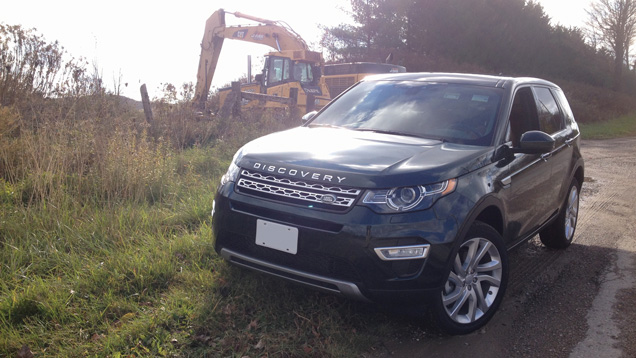Motoring: 2016 Land Rover Discovery Sport
 CREDIT: NAUMAN FAROOQ
CREDIT: NAUMAN FAROOQThe 2016 Land Rover Discovery Sport is comparable to a Range Rover Evoque, but it is $8,200 cheaper.
The Discovery name has been absent from Land Rover’s Canadian lineup for over a decade, but now the name is back on a new vehicle that is based on a Range Rover.
Think of the 2016 Land Rover Discovery Sport as a Range Rover Evoque, a vehicle for people who prefer less flash and larger proportions. The latter comes courtesy of an 81 millimetre longer wheelbase. The added length doesn’t sound like much, but it was enough to allow Land Rover engineers to squeeze in a couple of extra seats.
The Discovery Sport offers three rows of seats; although, small children on short drives should only ever use the last row.
Realistically, the extra length provides more cargo space and since the second row of seats can slide back and forth, you can create more legroom for back seat passengers. If you use it as just a five-passenger vehicle, the Discovery Sport is practical.
It doesn’t drink much petrol either. On the highway, I was averaging about nine litres per 100 kilometres.
On a city and highway combined run, I averaged 10.5 litres per 100 kilometres.
The reason this new Disco Sport is so efficient is due to its drivetrain. The only engine offered on this model is a 2.0 litre, four-cylinder, turbocharged motor that produces 240 horsepower and 240 pound per foot of torque.
Power is sent to all-wheels via a smooth and quick nine-speed automatic gearbox. For those who like to know about performance numbers, the 2016 Discovery Sport can sprint from zero to 100 kilometres per hour in 8.2 seconds, while its top speed is electronically limited to 200 km/h. It is fast enough to offer some thrills, but speed is not what this vehicle is about.
Capability is what a Land Rover has always been about, especially when you need to go to an area where tarmac doesn’t exist. This is where the Discovery Sport really shines and leaves its competition behind, as it has good ground clearance and proper off-road driving programs to help you get out of sticky situations.
In the Canadian climate, for most drivers, it’ll be this vehicle’s ability to handle snow that will stand out.
However, not everything about the Disco Sport is excellent. My biggest issue is with its touch screen infotainment system, which is difficult to work with when the vehicle is in motion.
Then, there is the turbo-lag. Put your foot down and there is at times an agonizing delay from the time you ask it to accelerate until the time it actually does.
The nine-speed automatic causes issues as well, as the vehicle spends its time deciding which gear would be best for you when you ask it to accelerate. I got so frustrated with this power-train at times that I’d put it in sport mode and use the steering wheel mounted pedal-shifters to go up and down the gears; this way I could better control the progress.
All in all, the 2016 Land Rover Discovery Sport is a fine vehicle for those looking for practicality that also offers some prestige. Pricing starts from $41,790, making it $8,200 cheaper than the base Range Rover Evoque.
Given how similar the two vehicles are, and that the Discovery Sport actually offers more practicality, the one I’d park at my house would be the one wearing the Land Rover badge














